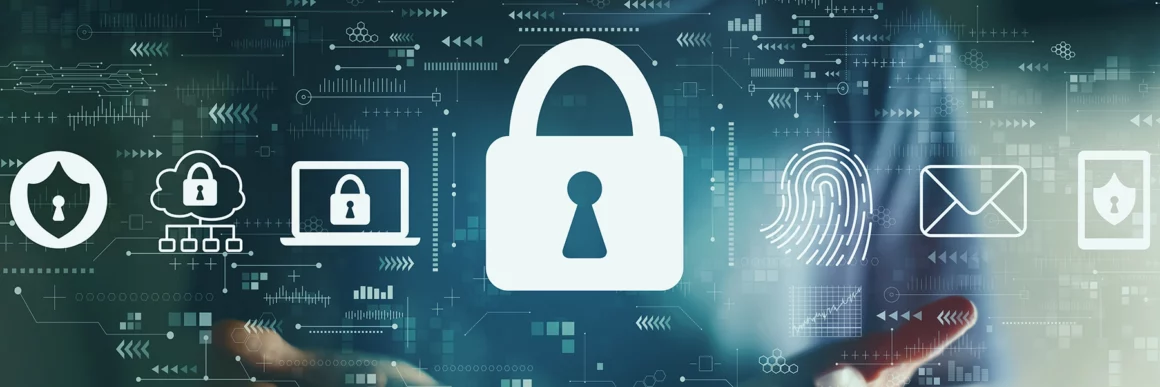Actionable and practical ways to manage your tween or teen’s privacy and safety online.
Protecting your preteen or teen’s digital privacy is an ongoing process that will evolve alongside their digital life. But there are many critical, concrete, and simple steps you can take now to keep them safe online. Some are steps to take on your own; others are steps to take together.
How to Protect Your Teen Online
Move through these tips with your preteen or teen and use them as an opportunity to deepen conversations about the importance of being a good digital citizen, practicing digital wellness, and protecting their privacy online.
1. Use Parental Controls
Engage all available parental controls. These controls filter and block unwanted content and are available through your internet provider and your devices themselves. (Common Sense Media’s Guide to Parental Controls is a good starting guide.)
Call your cell carrier and ask if they offer any additional parental control protection programs, like this one from ATT.
2. Disable Location Features
Turn off location features. Disable location tracking and tagging on all devices, on all apps and platforms. Only enable as needed for a maps app, or if using a parental GPS tracking app, like Life 360.
3. Use Google SafeSearch
Activate Google’s SafeSearch function on each device. This will hide explicit content, like violence and pornography, during Google searches.
4. Install Antivirus Software
Use antivirus software. Make sure all antivirus programs are up to date. While they won’t protect against every threat, they will help detect and remove most malware (software used for dishonest means).
5. Install Extra Monitoring
Get extra monitoring help. Parental controls aren’t foolproof, and some preteen will find workarounds. Use a program like Bark, Circle or Qustodio for added monitoring.
6. Set up an Open Phone Policy
Treat all your devices, including your phone, with an open book policy. Manually check their devices — and explain why. Go through their search history, texting and chats, and social media content.
Check them openly, in front of your preteen, and regularly. Let them know that you will be monitoring their online behavior when you give them the device.
7. Create Complex and New Passwords
Passwords should be strong, long, and unique — not easily guessed and a mix of capitals and lowercase letters, numbers, and special characters. Make sure your preteen or teen knows to never share or reuse passwords.
Try a password tool like LastPass, which makes it easier to create and “remember” unique passwords.

8. Use Passcodes on All Smart Devices
Enable locks. Smartphones, tablets, and laptops should be locked with a unique code that only you both know. As with their passwords, make sure they know not to share the code with anyone else.
9. Update Social Media Privacy Settings
Redo privacy settings. Go through their social media accounts together to ensure each is set to private.
While everything on the internet should be considered public and permanent, privacy settings are still important: They limit the number of people who see content and protect against hackers.
10. Choose Hard Security Questions
Make sure they know to choose hard security questions. Avoid discoverable or publicly available information when setting up security questions, like a maiden name or the city in which they were born.
11. Don’t Click on Unrequested Links
Teach them to be cautious of spam email and texts, and to never click on links sent by text, email, or through social media from someone they don’t know.
These are often a way to give the sender access to the device and/or accounts. If they do mistakenly click on a spam link, they should change their password for that account immediately.
12. Ask Them to Avoid Taking Online Quizzes
Avoid quizzes. What was their first dog’s name? The place they were born? Their best friend’s name?
These are common security questions used by banks and other organizations that hackers often pose on social media platforms, disguised as quizzes. It’s safer to avoid quizzes on social media altogether.
13. Online Shop From Secure Sites
If they’re shopping online, make sure they never make a purchase or add your credit card to a website that’s not secure. Secure sites will be designated with https: (the “s” stands for secure) and will likely have a lock symbol in the browser bar.
Other things to look for in secure shopping sites:
- Shop has an online presence on social media, where they interact with shoppers.
- Shop has review functionality where other shoppers can post their honest reviews.
- Shop has a secure payment option, either through PayPal or another service.
- Shop has a Better Business Bureau (BBB) rating.

14. Accept Friend Requests Carefully
Turn down friend requests. Teach them to screen friend requests carefully to make sure it’s someone they know in real life.
Accepting a friend request just to build a friends or followers list is too risky. This is a good opportunity to talk about the importance of keeping and deepening their IRL friendships instead of trying to seem popular online.
15. Use Secure Wi-Fi Connections
Only use secure connections. Public Wi-Fi connections are often not secured. Make sure they know not to provide private or personal information —their Social Security number, address, phone, etc. — over unsecured connections.
Some antivirus software offers VPN options, which helps you secure your personal information when using a public Wi-Fi, if you have to use public Wi-Fi. Otherwise, consider using your phone hotspot to connect when in a public space.
16. Always Log Out and Lock Computers
Remind them to always log off from all accounts or sites when using a public device, like a school or library computer or a friend’s gaming system or phone.
Even if they are only stepping away from the computer for a minute, help them create a habit of locking their computer every time they walk away.
17. Check the Sender Before Clicking a Link
Scammers have gotten smarter, and sometimes an email may look like it is from a legit source. Teach your tweens and teens to check the sender line. If it’s from a scammer, the sender in the “from” line won’t be the email address they expect.
18. Double Check IRL
Some of the newer scams prey on people’s empathy, asking for you to respond to an email or click a link to their GoFundMe from someone you think you know — a teacher, a family member, or a classmate, maybe. If your teen isn’t sure if it’s a scam or not, tell them to double check with the person in question in real life versus to double check.If you become aware of any dangerous behavior or content involving your teen — cyberbullying, predatory/exploitative behavior or enticement, or sexting — get help. Report the incident or troubling content to the website or platform, the cell phone and/or internet provider, law enforcement, and, when appropriate, the Center for Missing & Exploited Children’s CyberTipline.
